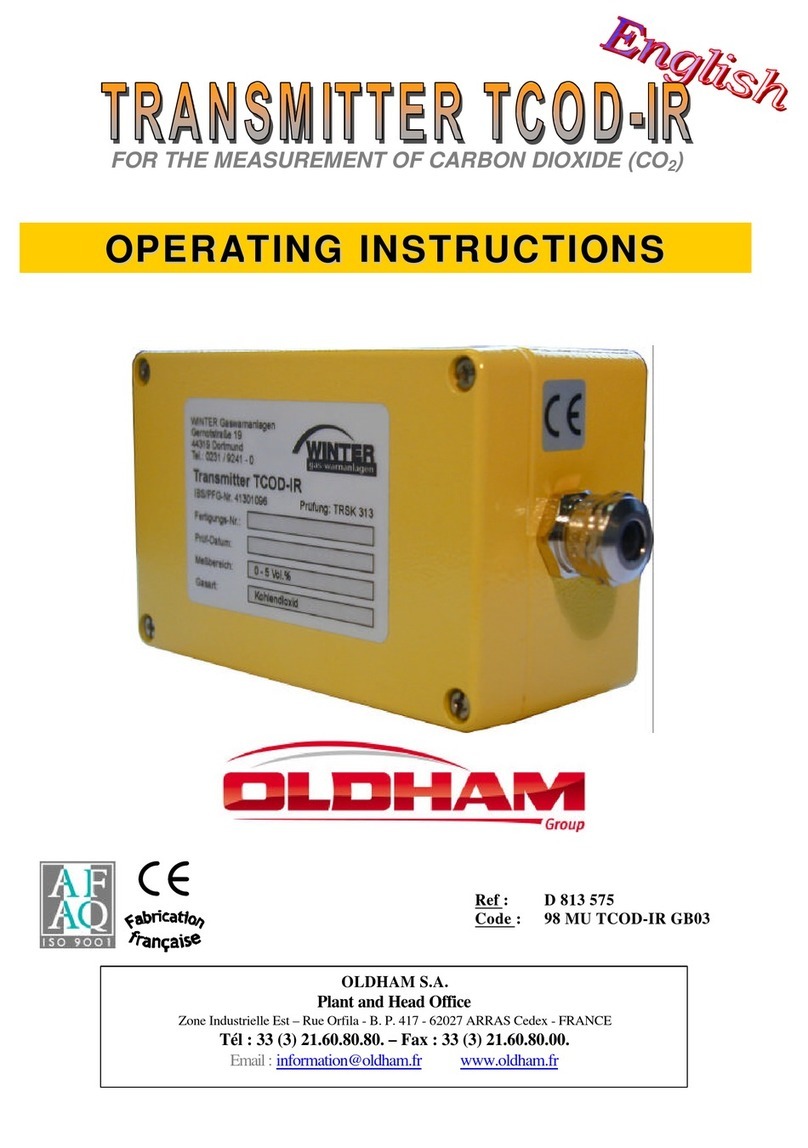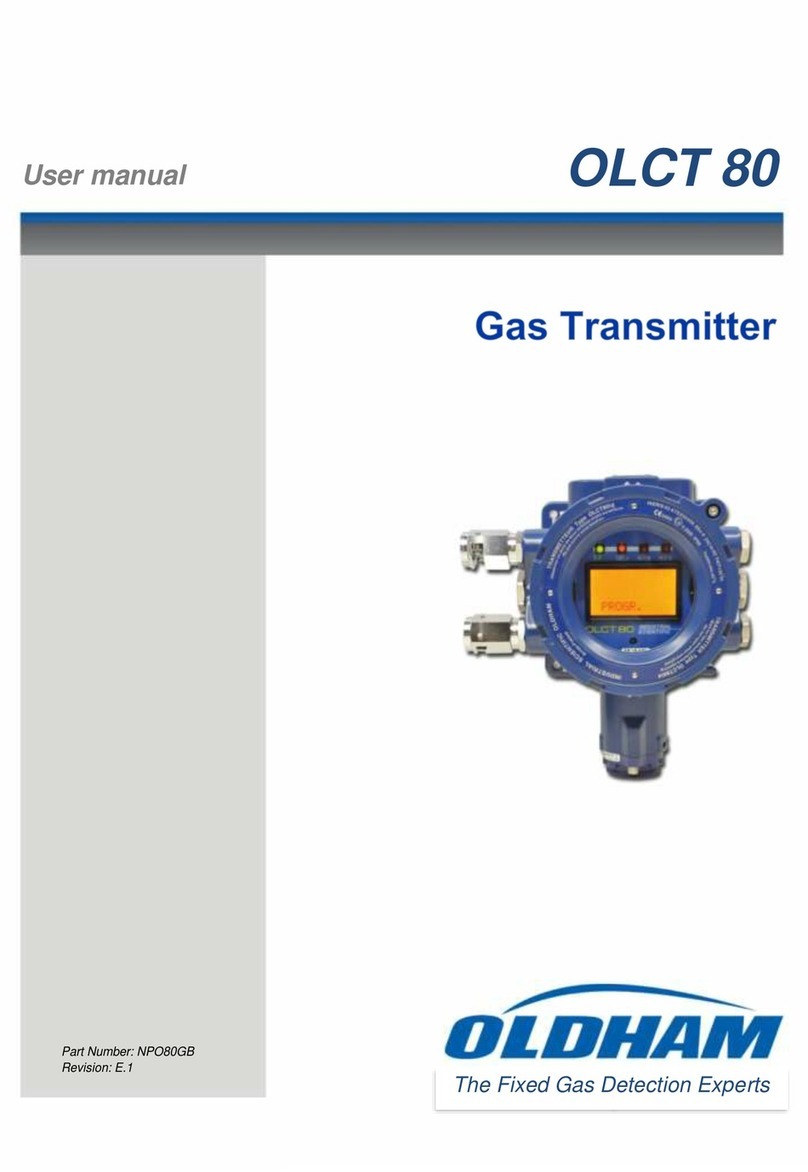9
OLCT 200 User Manual | 9
SECTION 2 - INSTALLATION
INSTRUCTIONS
2.1 Introduction
Important: This manual describes the 2-Wire 4-20mA , the 3-Wire 4-20mA and the
wireless versions of the OLCT 200. 2-Wire versions are only possible if the 10-0232
Display PCB IS THE ONLY PCB IN THE ENCLOSURE. If the 10-0233 I/O Power
Supply is installed it is a 3-Wire version. Wireless versions include a battery powered
version that can be used for electrochemical sensors or a 10-30VDC powered wireless
version that can use all OLCT 200 sensor types.
The OLCT 200 is a single or dual channel fixed-point monitor designed to provide
continuous monitoring of hazardous gases in the workplace. 2-wire and wireless
models are only single channel. Monitored values are displayed in their engineering
units as well as graphically as a bar graphs or 30-minute trends (Figure 2.1). Input
types include Electrochemical toxic / oxygen sensors, catalytic bead combustible
sensors, Infrared sensors, as well as Photoionization Detection (PID) sensors.
Sensors supplied by the factory include an 8-wire Smart Sensor interface capable of
configuration data uploads to the OLCT 200. Its advanced microcontroller electronics
and superior graphic LCD operator interface offers enhanced diagnostics and fault
analysis not possible in competing products. The wired OLCT 200 models provides a
standard 4-20 mA output signal for connection to control systems or other alarm
instrumentation. Available options include an Alarm Relay / RS-485-Modbus board, an
Isolated 4-20mA output board, and a HART Communication board. Wireless models
do not accept additional option boards. Non-volatile memory retains all configuration
data during power interruptions. The magnetic, non-intrusive calibration can be easily
performed by one person without opening the enclosure. A standard “real time clock &
calendar” feature allows data logging of calibrations and alarm events for recall to the
LCD readout or over the serial port.
The OLCT 200 wireless models functions on license free 900MHZ or 2.4GHZ wireless
Client / Server networks. Wireless data can be directly transmitted to Oldham WX4,
WX16 and WX64 Controllers. Controllers must be equipped with the matching RF
wireless modem and appropriate antenna to receive the transmissions.
Toxic and oxygen monitors are capable of 2-wire 4-20mA operation (section 2.6.1)
when the alarms / Modbus option and LCD backlight are not required. Catalytic LEL,
Infrared, and PID sensors, or addition of any option board, require the 10-0233 I/O
Power Supply board providing 3-wire 4-20mA operation (section 2.6.3).
Only periodic calibration checks are needed to assure dependable performance.
Operator interface is very intuitive with the LCD displaying data both graphically as bar-
graphs / trends and in engineering units (Figure 2-1). Additional features include:






























